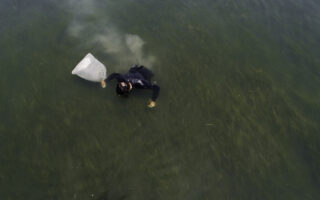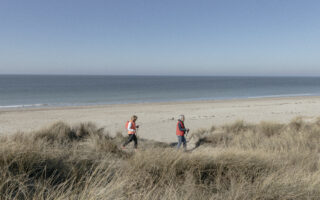Heat wave hits Europe, and it’s only going to get hotter

A heat wave engulfing southern Europe this week is expected to send temperatures close to record highs in some areas, prompting officials in Italy, Greece, Spain and elsewhere to impose measures to protect residents and tourists from the scorching conditions.
The last round of high temperatures, frequently referred to as Cerberus after the multiheaded dog that guards the underworld in Greek mythology, sent thermometers soaring above 98 degrees Fahrenheit (nearly 37 degrees Celsius).
And it’s expected to get worse. An anticyclone from North Africa moved into the region Sunday, spurring a new wave — this one known as Charon, after the underworld’s ferryman.
Governments are bracing for higher temperatures and issuing alerts in the expectation that things will only get hotter in southern Europe and the Balkans in the coming days, according to meteorology experts.
Though it is difficult to link individual events to climate change, scientists say the heat waves in Europe are increasing in frequency and intensity at a faster rate than practically anywhere else on the planet.
This summer is forecast to be worse than last year’s because of El Niño, a natural weather pattern forming for the first time in four years, which has fostered conditions for rising temperatures.
Here’s what you need to know.
How hot will it get?
In Italy, temperatures in cities like Rome and Florence are expected to hit 100 degrees in the coming day. Record-breaking heat as high as 118 degrees is forecast in some areas, and the country’s Health Ministry has put 16 cities under red alert heat warnings. Health officials advised people in affected areas to avoid direct exposure to the sun from 11 a.m. to 6 p.m.
Spain’s public weather monitor has warned that temperatures in the eastern Iberian Peninsula and Balearic Islands, including Mallorca, could reach highs of between 107 and 111 degrees through the next few days. Some parts of the country could record even higher heat levels, the State Meteorological Agency said.
The heat wave has parched the land and increased the risk of wildfires. On Saturday, a blaze spread fast in La Palma, one of the Canary Islands, engulfing about 11,000 acres of land, destroying a dozen homes and forcing more than 4,000 people to be evacuated, authorities said.
In Greece, the country’s national meteorological service warned that heat wave conditions would persist throughout the week, with temperatures as high as 111 degrees expected in the central part of the country.
Temperatures were expected to rise across Portugal this week, as well, reaching 104 degrees along the coast in the south and 97 degrees in the central and northern regions, according to the Portuguese Institute for Sea and Atmosphere.
In Croatia, residents in the coastal village of Grebastica were evacuated last week after the hot conditions fed a spreading wildfire. Temperatures on the country’s southern coast are expected to rise to 98 degrees in the coming week.
In southern Serbia, the mercury is expected to reach more than 100 degrees Monday. The intensity of the Charon heat wave, forecasters say, could lead to the highest temperatures ever recorded in many European countries.
How are European countries responding?
The deaths of 61,000 people last year could be attributed to the brutal heat in Europe, according to one recent study, with children and older people especially vulnerable to conditions.
After an especially deadly heat wave in 2003, officials in Europe introduced initiatives like warning systems for extreme heat and public cooling spaces. Local municipalities in some areas have tried methods such as adding reflective paint to pavements or creating more space for water to cool the ground. But experts say authorities have not done enough to mitigate the effects of heat waves over the longer term, including by adding more greenery and retrofitting public areas and transportation.
With fears that this year’s heat waves could also prove deadly, officials imposed protective measures this past week advising people to stay indoors where possible and to drink plenty of water.
In Italy, where a worker in the northern part of the country died this past week after collapsing while painting some signs in the heat, officials are providing misting tents in some areas, as well as issuing warnings and advice.
In Greece, the government has activated emergency measures that include opening public cooling spaces, allowing staff in private companies to work remotely and requiring workers at risk of heat stress to stop from noon to 5 p.m. Greece’s civil protection ministry warned of a high potential for fires in five areas and said that government and regional officials were on alert to help respond if needed.
The sweltering temperatures have arrived during peak tourism season for many European countries. Since Friday, Greek authorities have closed the ancient Acropolis during the hottest hours of the day to protect visitors. Hellenic Red Cross workers have been dispatched to the site to distribute free bottles of water.
This article originally appeared in The New York Times.






